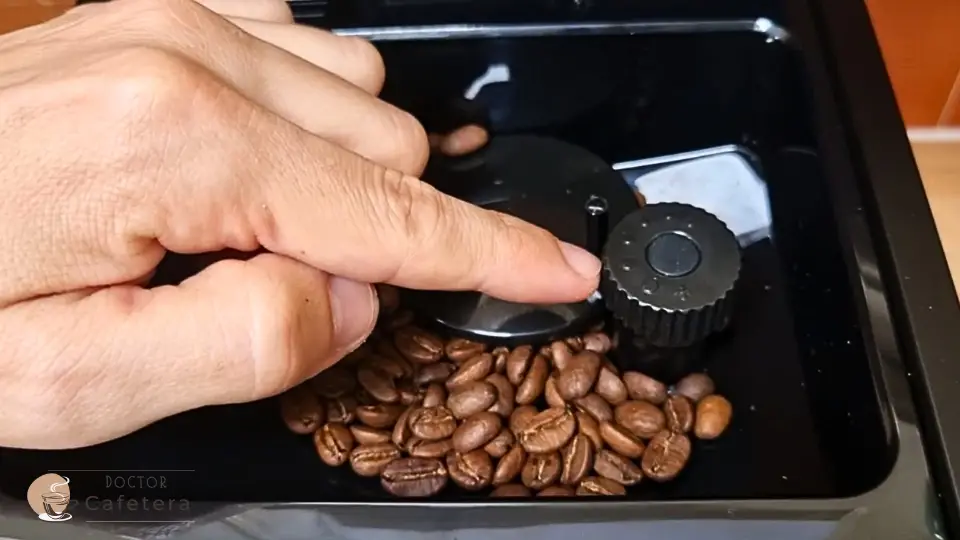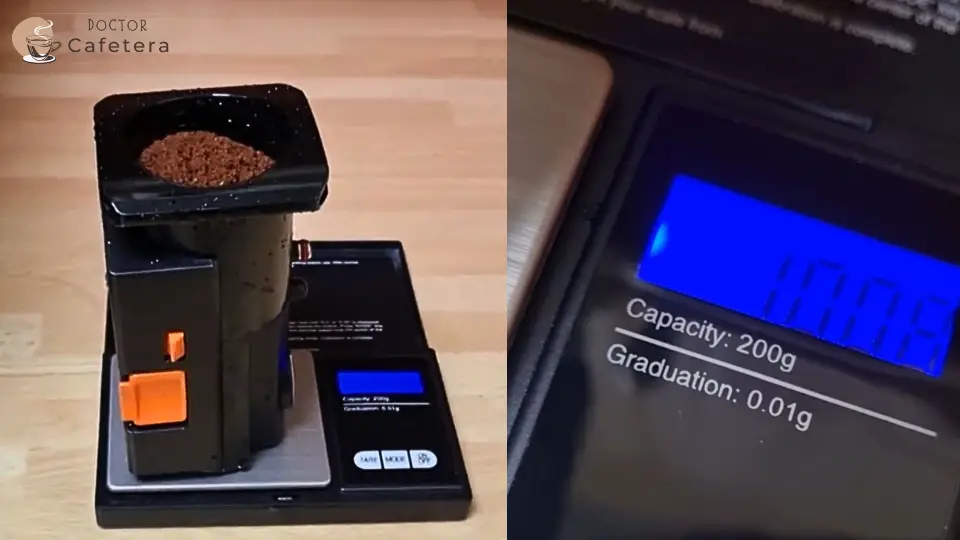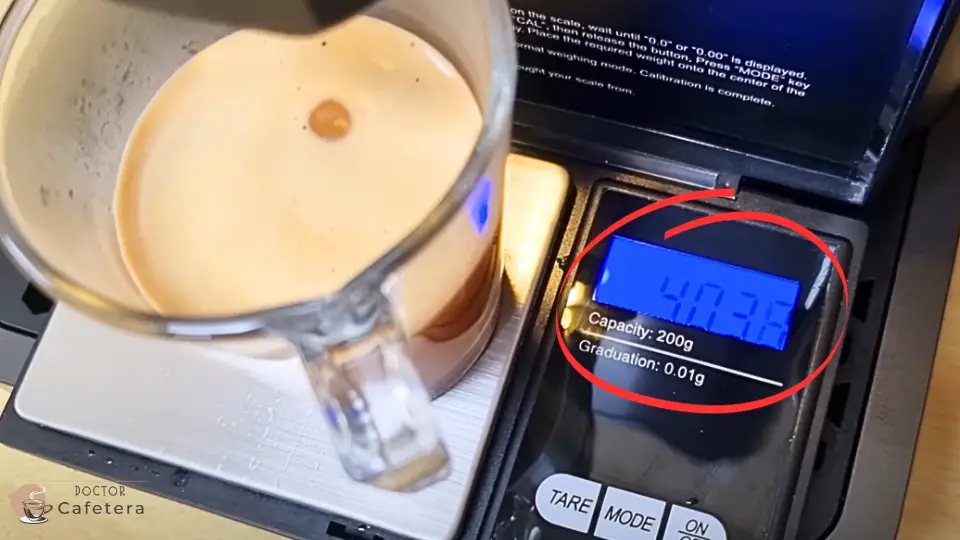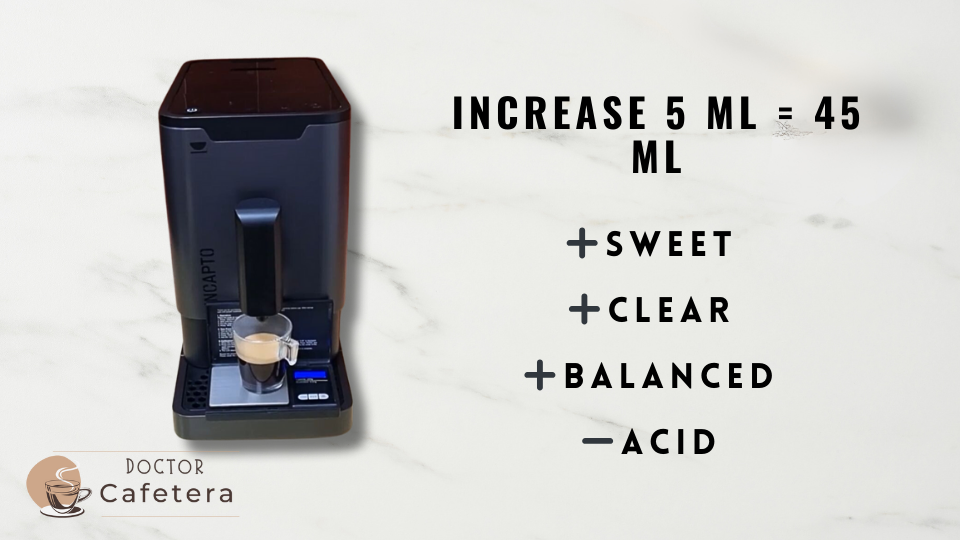Calibrating the espresso in your bean-to-cup coffee machine (super-automatic) is crucial for achieving a delicious and consistent beverage. Regardless of the brand or model of coffee machine you own, the process will be virtually the same. In this article, I will provide the steps and essential tips for calibrating your super-automatic coffee machine quickly and easily.
What does calibrating espresso mean?
In the world of coffee, “calibrating espresso” is the process of seeking the optimal quantity and flavor of coffee using the correct grind and the most suitable ratio between ground coffee and water.
➡️ To achieve a perfect calibration, you should consider three fundamental parameters: the grind size, the dose of ground coffee, and the amount of extracted beverage.
When calibrating, we will make one adjustment at a time, allowing us to keep a detailed record of how each modification affects the extraction.
Note: Get a digital scale before starting the espresso calibration with your super-automatic coffee machine. This will enable you to measure the coffee ground dose and amount of extracted beverage accurately.
How to achieve the perfect calibration
Everything you’ll see here is based on my experience after calibrating dozens of bean-to-cup coffee machines from all the well-known brands. To perform proper calibration, you must be meticulous with the steps I’m about to show you:
Step 1. Grinding level adjustment
Typically, in espresso machines, a rather fine grind level is used. However, in the case of bean-to-cup machines, I recommend using a grinding level one to three steps coarser than the finest (depending on your machine).
When using the finest grind setting, your super-automatic coffee machine may encounter issues with extraction, causing channeling in the coffee puck and resulting in uneven taste.
To compensate for the lack of “puck preparation” and achieve a good extraction (without channeling), I recommend working with a coarser grind than espresso coffee but finer than the one used in a Moka pot.
Step 2. Weighing the ground coffee dose
The second part of calibrating our super-automatic coffee machine is specifying how much coffee our machine grinds per preparation. But how can we know how much coffee is in the puck if it fills with water once it brewed? There’s a straightforward way to do this:
- Remove the brew group from the coffee machine, wash it, and dry it thoroughly (do the same with the coffee grounds container).
- Once clean and dry, weigh it digitally (zero the scale with this weight). Just in case, also weigh the coffee grounds box and write it down on paper.
- Place the brew group back in the coffee machine.
- Press the espresso coffee button (the strongest coffee, if available), and as soon as it finishes grinding the beans, disconnect the coffee machine from the electrical outlet.
- Reconnect the coffee machine to the power source and turn it on; it should reset and return the brew group to its resting position with the ground coffee inside. In some machines, the ground coffee is sent to the coffee grounds container.
- Next, remove the brew group and place it on the scale with the ground coffee inside. This will allow you to determine how much coffee your super-automatic coffee machine has ground. In other cases, you will have to weigh the coffee ground container.
Step 3. Measure and adjust the amount of extracted coffee
Once we know how much coffee our super-automatic coffee machine grinds, we need to measure and adjust the amount of beverage based on the ground coffee with a 4:1 ratio. In other words, for every gram our coffee machine grinds, we want 4 grams of beverage.
In the case of a coffee machine that uses a preparation dose of 10 grams (as shown in the image above), using a 4:1 ratio, we aim to obtain 40 grams of espresso. Knowing this, the next step is to brew an espresso.
Note: I remind you that before starting the process, it is important to zero the scale with the cup you intend to use. This way, the only real weight displayed will be that of the espresso.
Since all super-automatic coffee machines allow us to vary the final amount of beverage, we will adjust it to 40 grams.
- Once you have the 40 grams of the final beverage, you should taste the espresso and seek that unique balance between the coffee’s acidic, sweet, and bitter flavors.
- The next step will be to increase the final beverage by 5 milliliters, reaching a total of 45 grams; after this, taste the coffee. You’ll notice how the espresso becomes sweeter, lighter, more balanced, and less acidic.
- Increase another 5 milliliters in the final beverage and taste it. You will continue to notice that the coffee tastes sweeter, clearer, more balanced, and less acidic.
- Continue the process, and if you reach a point where the bitterness suddenly becomes too strong, you should reduce it by 5 ml to achieve the flavor and consistency of a well-calibrated coffee.
Note: In your case, bitterness may appear immediately when you increase by 5ml for the first time, or it may not appear until you reach 60ml. This will depend on various factors such as the grind size, coffee type, the coffee machine itself, etc.
Conclusion
Calibrating your super-automatic coffee machine is a fundamental step that ensures each cup of coffee you brew is a delight. You can achieve the consistency and quality desired in your homemade coffee through proper grinding, precise dosing, and the correct ratio.
Remember that calibration is not a process to be rushed. It requires patience and careful adjustment, so don’t hesitate to find the perfect balance that suits your preferences.
Note: Keep in mind that although the process is the same for any super-automatic coffee machine, it’s still worthwhile to be aware of the specific features of your machine.



